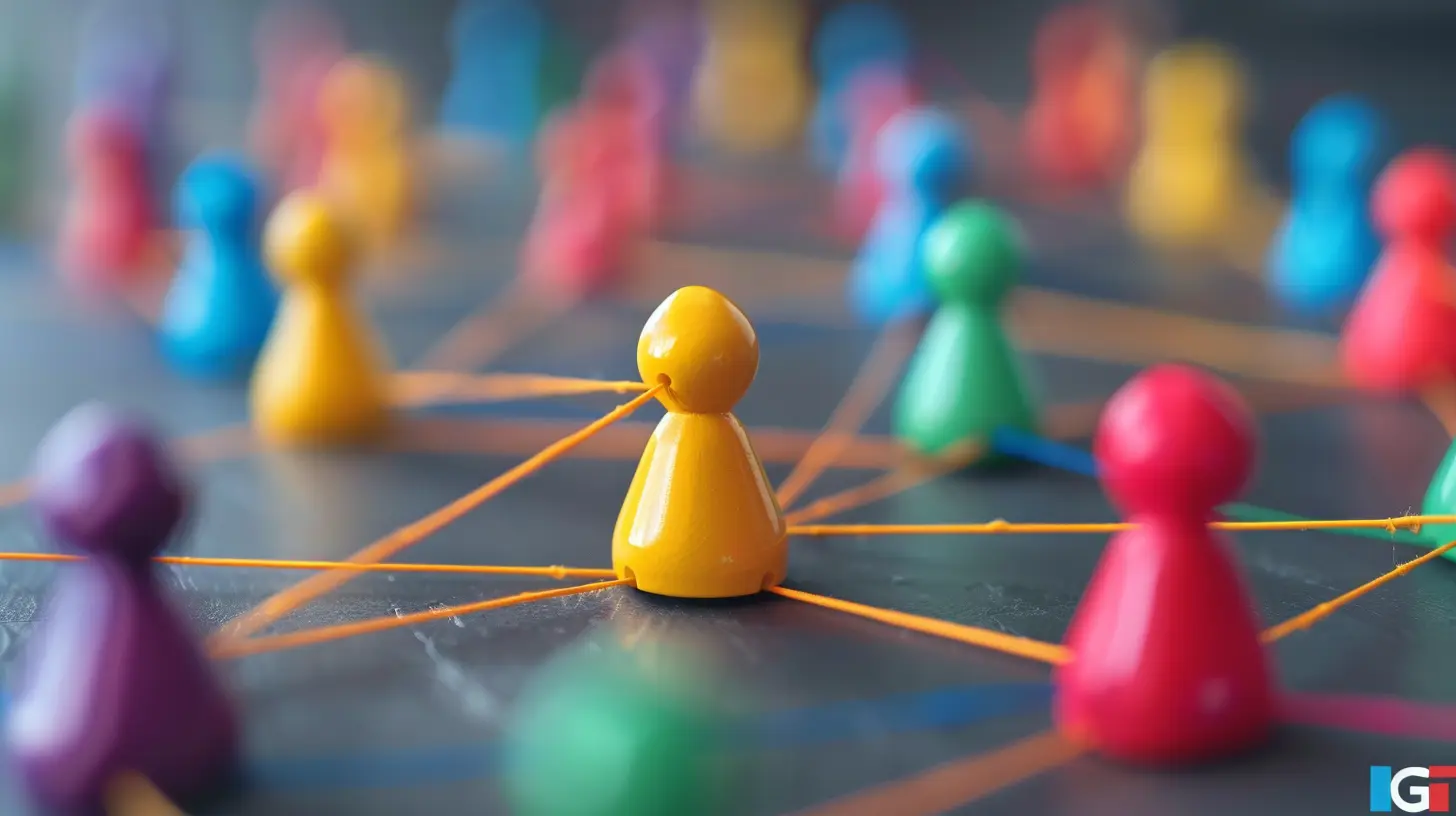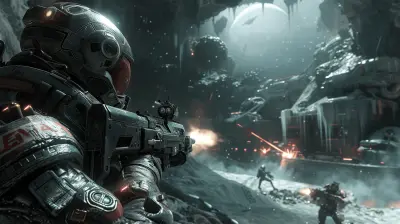Social Games and the Rise of Micro-Communities: A New Way to Connect
9 November 2025
In today’s hyper-connected digital era, gaming has evolved far beyond epic battles, pixelated graphics, or trying to beat an unbeatable boss. It’s become something deeper, more socially intricate, and honestly, pretty fascinating. Social games, those addictive little gems that lure you into building farms, forming alliances, or solving puzzles with strangers, are now reshaping how we connect.
But wait! We're not just talking about playing games here — we're diving into the rise of micro-communities within these games and why they're such a big deal. If you've ever wondered how Candy Crush, Fortnite, or Among Us became more than just games, you've come to the right place. Let me take you on a journey into the social playground that’s changing how we interact. 
What Exactly Are Social Games?
Alright, so first things first: What are social games? Think of them as multiplayer video games where interaction is a key element. But instead of just yelling at someone over a mic (hello, classic Call of Duty days), you’re collaborating, strategizing, or simply hanging out while playing.These games are often accessible on mobile devices, social media platforms, or even web browsers. They don’t require you to be a pro-level gamer with reflexes of steel. Instead, they offer simple mechanics and focus heavily on—you guessed it—social interaction. Games like Words With Friends, FarmVille, and Animal Crossing fall smack-dab in this category, and they’ve become more about creating bonds than scoring points. 
The Magic Ingredient: Micro-Communities
Here’s where things get really interesting. Social games are no longer just about global leaderboards or playing for bragging rights. They’re fostering tiny, tight-knit groups called micro-communities that completely change how we think about online spaces.What Are Micro-Communities?
Micro-communities are small groups of individuals who share a common interest or purpose within a larger ecosystem. Picture them as cozy little corners of the internet where everyone knows your name, much like Cheers — but instead of a bar, it’s inside a game.These groups tend to form naturally. Maybe you team up with the same players every time on Clash Royale or you meet a group of “neighbors” in Hay Day who are always willing to share resources. Pretty soon, you’re chatting more, strategizing better, and even sharing life updates. It’s not just about the game anymore; it’s about the people. 
Why Are Micro-Communities Thriving?
Okay, let’s talk about why these micro-communities are suddenly the hot topic in the gaming world. Spoiler alert: It’s not just because people are bored.1. The Need for Real Connections
In an age where social media can feel, ironically, isolating, many of us are craving genuine connections. Social games, with their built-in layers of collaboration and interaction, offer an antidote to the loneliness that often comes with scrolling endlessly through Instagram or TikTok.Think of it this way: Instead of passively watching someone else's highlight reel, you're actively engaging in a shared experience. Remember the feeling of accomplishing a group project in school? Social games bring that same sense of teamwork—but way more fun and without the annoying classmate who didn’t pull their weight.
2. Shared Goals Foster Bonds
There’s something magical about working toward a common goal, even if it’s something as silly as taking down a virtual dragon or growing a pixelated potato farm. When players work together on a task, it creates a strong sense of camaraderie.And let’s be real—who doesn’t love winning together? Achievements feel sweeter when shared with others. It’s like when your trivia team crushes a pub quiz; you’re instantly bonded.
3. Inclusive and Accessible
Most social games are super easy to pick up. You don’t need $2,000 gaming rigs or a decade of experience to compete. This accessibility lowers the barriers for entry, creating diverse micro-communities with people from all walks of life.Your 14-year-old cousin and your 65-year-old retired neighbor could both be part of the same Words With Friends group. And guess what? Age, background, or location doesn’t matter. That’s the beauty of these games—they bring together people who might never cross paths in real life. 
How Social Games Are Building Bridges
Alright, so we’ve established that social games are creating these vibrant micro-communities. But how exactly are they doing it? Is it all just clever game design? Well, kind of, but there’s more to it than that.Chat Features Keep Conversations Flowing
A lot of social games incorporate chat systems into their platforms, allowing players to communicate in real-time. Whether it’s through text, in-game emotes (those adorable little animations), or voice chats, these tools make it super easy to form connections.Think about Among Us. Sure, the main goal is to figure out who the imposter is (or sabotage everyone if you’re the imposter), but the game wouldn’t be nearly as fun without the hilarious accusations and debates in the chat.
Events Bring Teams Closer
Many social games schedule special events, like tournaments or limited-time challenges, that encourage players to team up. These events act as a catalyst for forming or strengthening micro-communities.Imagine a Pokemon GO raid where strangers come together at the local park to catch a rare Pokémon. By the time it's over, they're exchanging tips, high-fives, and maybe even planning the next raid.
Reward Systems Encourage Collaboration
Games are smart about using rewards to drive collaboration. Whether it’s sharing lives in Candy Crush or pooling resources in Clash of Clans, these mechanics make teamwork feel valuable.And trust me, once you’re part of a team that’s always got your back, you’ll feel way more motivated to log in and contribute.
The Future of Social Games and Micro-Communities
So, where’s this all headed? Are micro-communities the future of online gaming? All signs point to "yes." But it’s not just about gaming anymore. Social games are starting to influence other industries, from education to workplace collaboration.Companies are looking at these models to improve team dynamics, while educators are exploring gamified platforms for learning. It turns out that the same principles that make games engaging—teamwork, shared goals, and a sense of community—are incredibly effective in other areas too.
Why You Should Give Social Games a Try
Still on the fence about diving into the world of social games? Let me tell you, there’s never been a better time to start.The beauty of these games lies in their simplicity and inclusivity. Whether you’re looking to make new friends, strengthen existing relationships, or just take a break from the chaos of everyday life, social games offer a perfect escape.
Plus, who doesn’t love a little friendly competition? And let’s be real—it’s way more fun to brag about crushing your friends at Words With Friends than to win an argument about politics on Facebook.
Wrapping Up
Social games and micro-communities are revolutionizing the way we connect with others. They’re not just a form of entertainment; they’re a powerful tool for fostering meaningful relationships in a world that often feels fragmented.So, the next time you boot up a social game, remember—you’re not just playing. You’re part of something bigger, something that could evolve into a lifelong connection. And honestly? That’s pretty darn cool.
all images in this post were generated using AI tools
Category:
Social GamesAuthor:

Emery Larsen
Discussion
rate this article
1 comments
Axel Garcia
Micro-communities in social games: finally, a place where your obsession with pixelated farming can blossom into meaningful friendships and coordinated raids—because who wouldn’t want to share a virtual hoe?
November 9, 2025 at 5:39 PM

Emery Larsen
Thank you! It's exciting to see how micro-communities in social games foster genuine connections through shared interests and collaborative gameplay. Happy farming!


